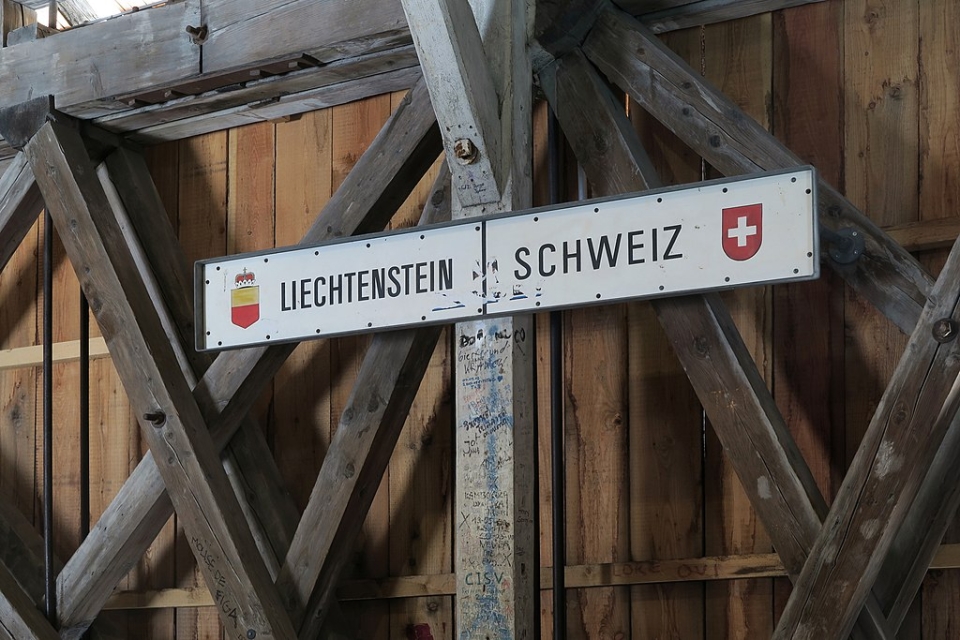The Customs Union Treaty with Liechtenstein
Exactly 100 years ago, Switzerland’s smallest neighbour made its fateful decision: Wedged between the Confederation and Austria, the Principality of Liechtenstein turned to the former and, on 29 March 1923, signed the Customs Union Treaty with Switzerland. «This laid the foundations of the close relationship which both countries have maintained until the present day», says Sacha Zala, Director of the Dodis research centre.
Breaking with Austria
The Treaty had, as its roots, the dissolution of Austria-Hungary at the end of the First World War. The defeat of the Habsburg Empire also marked the end of the customs union between the Dual Monarchy and the Principality of Liechtenstein. In May 1919, Prince Karl of Liechtenstein had already made his intentions clear: «See that the Principality enters into all of those agreements, which have previously unified it to Austria (customs, post, etc.).» Furthermore, he hoped, as a first step, for the accreditation of a diplomatic envoy in Bern, as well as that Switzerland should represent the Principality abroad (dodis.ch/44151).
A Swiss as representative of Liechtenstein in Bern?
Of all people, Prince Karl put forward the Bern native, Emil Beck, as Liechtenstein’s chargé d’affaires in Bern, which posed an awkward question for the Swiss authorities: «Can we accept a diplomatic representative who is our own citizen?» Precedents did already exist, namely the case of Guatemala (dodis.ch/44154). The Federal Council, nevertheless, asked its legations in Rome, Paris, London and Berlin to sound out the opinions of the governments of their respective countries towards a diplomatic representation of Liechtenstein by Switzerland (dodis.ch/44323). In November 1919, the decision was made: «All of the responses were favourable» (dodis.ch/44357).
Open Vorarlberg question
When drawing up the Customs Treaty, Switzerland was hesitant – at least while it was not yet decided, whether the neighbouring Austrian state, Vorarlberg, wanted to join Switzerland. «A customs union with the Principality of Liechtenstein [is] only conceivable if Vorarlberg were also to be affiliated with Switzerland», wrote the Swiss Director of Customs to the Federal President Calonder in May 1919 (dodis.ch/44194). On the contrary, for international observers it was clear: «If Vorarlberg remains a part of the Republic of Austria, there seems no reason why Liechtenstein should not continue in the position it has previously held. It would be a sovereign state.» If Vorarlberg were to join Switzerland, the Principality would find itself pushed into a position of dependency comparable to that between San Marino and Italy: «Liechtenstein would obviously cease to have any possibility of independent intercourse with other states.» (dodis.ch/55495) The Swiss envoy in Vienna drew a similar conclusion: «If Vorarlberg were to become Swiss, then Liechtenstein certainly would too.» (dodis.ch/44167)
«Purely a matter of discretion»
Once the issue of Vorarlberg had been overcome with its decision in favour of Austria, the negotiations between the Principality and Switzerland gained momentum, starting with the new postal union between the two states in 1921. In a report, the Finance and Customs Department spoke in favour of starting negotiations: The «geographical preconditions» have been fulfilled and given the «similarity of the population […] in customs and habits» (dodis.ch/44700). Nevertheless, the Federal Council was somewhat cautious: The customs unification brings Switzerland «neither meaningful advantages, nor will it have any notable disadvantages. It is, therefore, purely a matter of discretion, whether Switzerland wants to offer this service to the small country.» In any case, so many years since Liechtenstein’s first inquiry, it is necessary to «take a position on this matter» (dodis.ch/44800). The Customs Union Treaty between Switzerland and Liechtenstein was finally signed on 29 March 1923 with great ceremony. (dodis.ch/63042)
Close relationship put to the test
Relations between Switzerland and the Principality of Liechtenstein have been tested again and again. For example, in what became known as the «March Crisis» in 1938, when German troops occupied Austria, or with regard to the fact that products of Liechtenstein were regularly referred to as Swiss (dodis.ch/62590). There have been regular disputes around the armoury at St Luzisteig (dodis.ch/62584) – unintended Swiss artillery fire into Liechtenstein in 1968 even led to «anti-imperialism demonstrations» in the USA (dodis.ch/36177). The finance and banking scandals of the 1970s also led to political complications (dodis.ch/62577), as has the Principality’s growing foreign policy emancipation: Liechtenstein had already joined the UN in 1990 (dodis.ch/C1854) and while Switzerland narrowly rejected joining the European Economic Area in December 1992, the voters of Liechtenstein voted in favour of joining a few days later (dodis.ch/C2487).
«Close neighbourly ties»
«At the same time though, it was these crises, in particular, that provided the opportunity to deepen this special relationship», emphasises Sacha Zala. The «March Crisis» led to Switzerland’s foreign policing competencies being extended to include Liechtenstein (dodis.ch/47170), in 1954 an agreement on AHV (Old-Age and Survivors Insurance) was signed (dodis.ch/10605), cooperation in sport was increased (dodis.ch/60472) and, in 1980, the two neighbours closed a new monetary agreement (dodis.ch/62564). «The Customs Union Treaty of 1923», summarises Zala, «laid the foundations for this now one hundred years of close neighbourly ties.»
